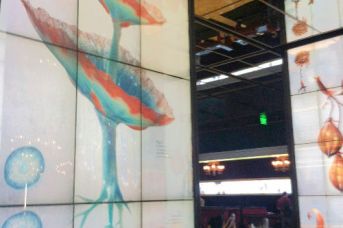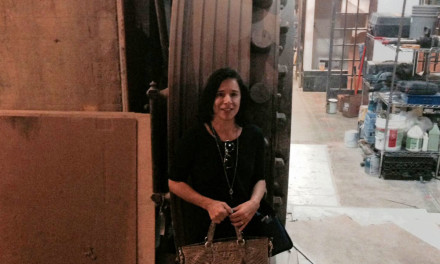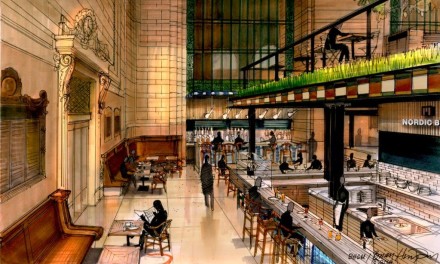
Remember the days when new high-end hotels wanted to install iPads in their rooms, and media (myself included) used to write stories about it?
Well, those days are long gone! Tech rules – and has now become a main consideration for a hotel’s design throughout its four walls, well-known hospitality designer Jeffrey Beers recently told me.
TWITTER: Join Barb on Twitter
MORE UNIQUE COVERAGE: Meet Airbnb’s newest customer
MORE UNIQUE COVERAGE: My New York Palace blog launch
Beers, who has put his stamp on the renovations of iconic properties such as the Fontainebleau in Miami Beach and Manhattan’s New York Palace, sees the digital-design trend exploding going forward.
“It has now become all about having full-blown interactive walls. Areas of the hotel where you can touch screens and find out things,” Beers told me. “There’s a variety of information available that lends itself to artistic moments. It becomes part of the design of the space.”
Double-screening, social network-obsessed Millennials are fueling the trend. I see further reason in my own children – Alessandro, 13, and Joaquin, 9, who have a variety of mobile devices of varying sizes. Every time they see a digital screen in a hotel or retail shop, they touch it, expecting it to respond immediately to their fingertip; often they are disappointed but I suspect that won’t be for long.
“Hotels are all about Millennials who want faster and more information and they want to be more engaged with more knowledge,” Beers told me during our recent conversation. “They want a greater ability to understand what’s happening in the city or neighborhood in five minutes – and that could be restaurants, events, galleries and artists. That’s got to be part of it.
“They want a younger, faster, more information driven property so they can plug in and can be engaged in not only the hotel and the offerings of the hotel but the city itself and the neighborhood,” he said.
Hotel owners increasingly ask Beers to expand on the digital design trend, “to get richer and deeper. To engage the guest more and more and more.
When I think of interesting use of digital signage that changes, although is not necessarily reactive to touch, I think of:
- The Cosmopolitan – Las Vegas. The lobby has giant floor-to-ceiling columns that change based on the season, time of day or even who is checking in at the hotel. My favorite digital content that I saw about a year ago were a beautiful botanicals series. I found them mesmerizing. (See my photos above and below.)
- InterContinental – Miami. When you check in, there’s live-cam footage on a 20-foot-long screen behind the clerks. When you sit in the lobby, your table will likely have an interactive screen that you can touch to make work. The goal at some point is to let guests order food or drinks.
- Courtyard by Marriott – Everywhere. Years ago, the ubiquitous mid-priced chain installed the “GoBoard” screen in its lobbies where guests could quickly view news, weather and other handy information. They’re not going away.
- Tryp by Wyndham – New York City. The first U.S. property of the Spanish brand acquired several years ago by Wyndham opened a few years ago near Penn Station with an interesting mix of screens installed above eye level. What caught my eye was a hotel-guest-only Facebook-style network that guests could opt in and communicate. One screen was dedicated to the network’s stream. No privacy issues because you had to opt in before your name would appear.
Readers: Are you noticing an increasing number of screens in hotels? Thumbs up or down? Please elaborate in the comments below 🙂






